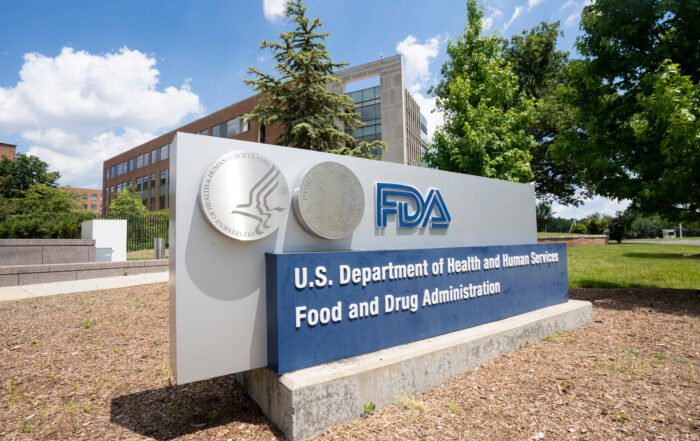
An Overview of Food and Drug Law Practices, 2023 Update
By Stuart TenHoor*
In March 2013, FDLI published my article: “An Overview of Food and Drug Law Practices.” As it’s now a decade old, it’s time for an update.
I believe the number of lawyers who call themselves food and drug regulatory attorneys, or FDA lawyers, is probably around 500–750. This includes perhaps as many as 200–250 at the Food and Drug Administration (FDA) itself. When we count lawyers with an ancillary focus on food and drug law, who sometimes refer to themselves as FDA lawyers, that number is more likely 1,500. There are now also more in-house FDA regulatory lawyers than 10 years ago, and if you are an attorney employed by a drug, device, food, or tobacco company, you may certainly call yourself an FDA attorney, no matter your professional focus.
Generally, a private practitioner might label themselves an FDA lawyer if handling food, drug (pharmaceutical industry generally, including biologics and biosimilars), or medical device regulatory issues. However, thinking broadly, other subset practice foci could also include: advertising & promotion, antitrust, cannabis, CBD, compliance and enforcement, consumer protection, corporate transactional, cosmetics or dietary supplements, public policy, litigation (administrative, intellectual property, or products liability and class actions—an active area), reimbursement, or tobacco. While I might have missed a sub-set or two, this listing generally covers most any topic on which a “food and drug lawyer” might work.
While I feel that the general outlines of my 2013 article remain accurate, I make some refinements to how I categorize law firms with FDA practices. I also observe some salient issues on how the practice of FDA law plays out in law firms and, finally, describe how perhaps 75–80 law firms have approached the hiring and retention of FDA regulatory attorneys.
Category I law firms have perhaps 20 or more FDA practitioners. Generally, they have all the major areas covered, usually with multiple (if not more than five) lawyers focusing on the major industry segments (food, drug, or device). They can provide “one stop shopping” and handle almost any legal issue a client might have on a wide variety of food and drug law-related issues. While some firms divide their FDA practice team into major categories, many firms have attorneys working on multiple sub-sets of FDA law, although specialization is now more the norm. Most of these general practice law firms have more than 1,000 lawyers. They are international in reach as many of their firm’s clients operate worldwide.
Law firms in this category find a key advantage: by providing most legal services life science companies need, their “seamless” provision of such services better connects these clients to their firm. Thus, because such firms are regular providers of various legal services to larger clients, the food and drug expertise effectively “binds” such clients to their law firm.
Category II firms are FDA regulatory boutiques. These firms have between 5–35 food and drug regulatory law practitioners. Over the past 10 years, some boutiques have added capabilities outside of strictly regulatory to provide more “one-stop shopping” options (such as corporate due diligence support or more developed compliance capabilities) for their clients.
It is worth noting here that when boutiques offer more than FDA regulatory services, they may risk obtaining referral work from general practice firms without FDA regulatory capabilities. That is because many times the “client” of these boutiques is actually a general practice firm seeking an FDA regulatory capability for an important client. General practice firms often shy away from such referrals as they do not want to risk losing non-FDA work to a boutique. But these referral networks are often long-lasting when original client loyalties are not threatened.
Another point is that many boutiques employ scientific personnel or consultants (some larger general practice firms also do this). They typically have highly advanced educational degrees and years of regulatory experience (perhaps gained while at FDA) to provide additional, lower cost expertise, and more fully serve clients with technical aspects of regulatory approvals required by FDA, the United States Department of Agriculture, or the Federal Trade Commission (FTC). Food and drug regulatory consulting firms bill at lower rates than law firms and increasingly service more clients who may have highly technical issues.
Finally, typically in boutiques, both attorney compensation and billable hour rates are generally 10–40% lower than in the largest general practice firms.
Category III firms are far more numerous than Category I firms. These general practice firms, quite frequently with 500 or more lawyers, typically have at least five and perhaps as many as 15 food and drug law practitioners. These firms lack the depth and breadth of Category I firms and rarely provide the complete array of FDA legal services listed at the beginning of this article. For example, while they might handle FDA administrative litigation, advertising and promotion, or compliance work, they may lack medical device or reimbursement capabilities, and existing or prospective clients may look elsewhere for that capability when needed.
Category IV law firms often have a very small number of FDA practitioners, and some firms even have no practitioners working full-time on FDA matters or have a few niche attorneys, such as FTC attorneys who work some or predominantly for life sciences industry clients. These firms are often either opportunistically or energetically seeking this expertise and have, or regularly seek, life science clients, and have concluded the firm needs to have FDA practitioners to enlarge or service them.
Other Factors Impacting Food and Drug Law Practices
In my work with law firm FDA practices, I have noticed how Category I firms, and sometimes Category III firms, take advantage of the process of secondment. This involves the firm placing one (or more) of its attorneys to perform legal work within the in-house legal shop of a client company. This practice can be a great relationship builder for such law firms and often results in better client retention. Furthermore, it can enhance the chance that other types of legal work—“big ticket” litigation or transactional due diligence matters—can flow from the deeper relationships built by a seconded attorney.
Another factor is that some life science client work for food or dietary supplement companies is often done at lower hourly billing rates or through alternative fee arrangements. Firms with larger practices often do not handle this type of legal work: it is more frequently done by Category II firms.
I have also observed how a segment of FDA lawyers may get involved in two types of litigation: in products liability and intellectual property. The firms that represent life science companies in product-liability matters often seek to have an FDA regulatory practice. However, I have observed that many firms with this type of litigation do not necessarily build an active FDA regulatory practice.
The intellectual property litigation is most frequently Hatch–Waxman[1] (1) litigation. The lawyers with this expertise are litigators first, although they understand FDA regulatory issues in depth and infrequently handle FDA regulatory work. Furthermore, depending on their firm’s focus, these lawyers exclusively represent either “generic” or “branded”[2] (2) types of clients.
Lastly, few FDA regulatory lawyers, without due diligence or other types of litigation matters in any given year, bill more than 1,500 hours annually. Larger firms typically expect of their attorneys between 1,800–1,950 or more billable hours. Many law firms seeking to add FDA regulatory talent, however, may be disappointed if an FDA lawyer they hire does not meet this standard. An FDA lawyer handling regulatory counseling (with no diligence projects or litigation) routinely struggles to hit this benchmark since they work on various counseling matters over the course of a day, none of which can sustain the hours that litigators record.
Lateral Hiring Issues
Category I firms have an enviable recruiting advantage. Since they already perform a sizeable amount of FDA work, they may have a surplus or anticipate more work when hiring lawyers from the government, life science companies, or trade associations. Yet, those hired, based on previous employment, are unlikely to bring clients with them to their new law firm.
Hired FDA attorneys hope to utilize their new firm’s position to quickly make an impact on current client FDA legal issues or positively affect existing or potential clients’ analysis of the firm’s FDA capabilities. Category I firms also attract talented laterals from other firms who often lack sufficient critical mass of FDA talent to maintain existing clients or develop new ones. It can be frustrating to lawyers in very small FDA practices as they seek to obtain a steady flow of FDA client work.
Firms in Categories III and IV have had some success finding “pioneers,” or those confident in their abilities to jump-start a practice without skilled FDA colleagues. Such firms seek to demonstrate their ability to offer opportunities for new client work to prospective laterals. Although most sizeable clients needing FDA expertise already have outside counsel supplying it, firms from all categories hope to show prospective laterals how their firm is well-positioned to garner FDA regulatory work.
Conclusion
Since approximately 25% of every consumer dollar spent in the United States is for products regulated by FDA, I expect demand to remain strong for FDA regulatory legal talent. Furthermore, as the number of FDA attorneys capable of creating or expanding law firm FDA practices is relatively small, the demand has remained strong for FDA regulatory legal talent since my first article was published in 2013. I expect this will continue.
* The author would like to thank Nathan Brown, Neil Di Spirito, Dan Kracov, and Stuart Pape for reviewing a draft and providing insightful comments.
[1] https://www.phrma.org/-/media/Project/PhRMA/PhRMA-Org/PhRMA-Org/PDF/D-F/Fact-Sheet_What-is-Hatch-Waxman_June-2018.pdf.
[2] https://news.bloomberglaw.com/pharma-and-life-sciences/insight-pharma-generics-attorneys-dont-need-to-pick-sides-anymore (interesting but debatable).
Update Magazine
Spring 2023

 STUART TENHOOR, President of Stuart TenHoor Legal Search, is in his 35th year as a legal search consultant in the Greater Washington, DC area. TenHoor is also a career coach for food and drug lawyers (
STUART TENHOOR, President of Stuart TenHoor Legal Search, is in his 35th year as a legal search consultant in the Greater Washington, DC area. TenHoor is also a career coach for food and drug lawyers (





